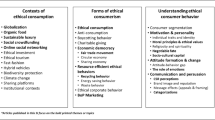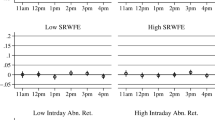Abstract
The growing demand for high-tech products has resulted in strong growth in demand for certain minor metals. In combination with production concentrated in China, this caused strong and unpredicted price movements in recent years. As a result, manufacturing companies have to cope with additional risks. However, the detailed reasons for the price development are only partially understood. Therefore, we analyzed empirically which determinants can be assigned to price movements and performed an event study on the high-tech metals neodymium, indium, and gallium. Based on our dataset of news items, we were able to find coinciding events to almost 90% of all price jumps (recall). We showed that if any information about these events occurred with a probability of over 50% there would also be a price jump within 10 days (precision). However, the classical set of price determinants has to be extended for these specific markets, as we found unorthodox factors like holidays or weather that may be indicators for price movements. Therefore, we hope that our study supports industry for instance in performing more informed short-term planning of metals purchasing based on information about specific events.



Similar content being viewed by others
Notes
Details of the Metal-Pages pricing methodology can be found at: http://www.metal-pages.com/metalprices/our-pricing-methodology.
References
Ait-Sahalia, Y. (2004). Disentangling diffusion from jumps. Journal of Financial Economics, 74(3), 487–528.
Angerer, G., Erdmann, L., Marscheider-Weidemann, F., Scharp, M., Lüllmann, A., Handke, V., et al. (2009). Rohstoffe für Zukunftstechnologien. Einfluss des branchenspezifischen Rohstoffbedarfs in rohstoffintensiven Zukunftstechnologien auf die zukünftige Rohstoffnachfrage. Stuttgart: Fraunhofer IRB Verlag.
Ayres, R. U. (1997). Metals recycling: Economic and environmental implications. Resources, Conservation and Recycling, 21(3), 145–173.
Bhagwati, J. N., & Feenstra, R. C. (1982). Tariff seeking and the efficient tariff. In J. N. Bhagwati (Ed.), Import competition and response (pp. 245–262). Chicago: University of Chicago Press.
Bhagwati, J. N., & Johnson, H. G. (1961). A generalized theory of the effects of tariffs on the terms of trade. Oxford Economic Papers, 13(3), 225–253.
Bloomberg News. (2010). China Cuts Export Quotas for Rare Earths by 35%. Bloomberg. http://www.bloomberg.com/news/2010-12-28/china-cuts-first-round-rare-earth-export-quotas-by-11-correct-.html. Accessed 01 June 2012.
Bodie, Z., Kane, A., & Marcus, A. J. (2002). Investments (5th ed.). Boston: McGraw-Hill/Irwin.
Bradsher, K. (2010). China to tighten limits on rare earth exports. New York: New York Times.
Brecher, R. A., & Bhagwati, J. N. (1981). Foreign ownership and the theory of trade and welfare. Journal of Political Economy, 89(3), 497–511.
Brunetti, C., & Gilbert, C. L. (1995). Metals price volatility, 1972–1995. Resources Policy, 21(4), 237–254.
Cairns, R. D. (1990). The economics of exploration for non-renewable resources. Journal of Economic Surveys, 4(4), 361–395.
Campbell, J. Y., Lo, A. W., & MacKinlay, A. C. (1996). The econometrics of financial markets. Princeton, NJ: Princeton University Press.
Chen, M. (2010). Understanding world metals prices—Returns, volatility and diversification. Resources Policy, 35(3), 127–140.
Cuddington, J. T. (2008). An analogy between secondary and primary metals production. Resources Policy, 33(1), 48–49.
Dasgupta, P., & Heal, G. (1974). The optimal depletion of exhaustible resources. Review of Economic Studies, 41, 3–28.
Demirer, R., & Kutan, A. M. (2010). The behavior of crude oil spot and futures prices around OPEC and SPR announcements: An event study perspective. Energy Economics, 32(6), 1467–1476.
Deshmukh, S. D., & Pliska, S. R. (1980). Optimal consumption and exploration of nonrenewable resources under uncertainty. Econometrica, 48(1), 177–200.
Devarajan, S., & Fisher, A. C. (1982). Exploration and scarcity. Journal of Political Economy, 90(6), 1279–1290.
EC. (2010). Critical raw materials for the EU: Report of the Ad hoc Working Group on defining critical raw materials. European Commission. http://ec.europa.eu/enterprise/policies/raw-materials/files/docs/report-b_en.pdf. Accessed 10 June 2014.
Fama, E. F. (1970). Efficient capital markets: A review of theory and empirical work. Journal of Finance, 25(2), 383–417.
Fama, E. F., & French, K. R. (1987). Commodity futures prices: Some evidence on forecast power, premiums, and the theory of storage. Journal of Business, 60(1), 55–73.
Fischer, C., & Laxminarayan, R. (2004). Monopoly extraction of an exhaustible resource with two markets. Canadian Journal of Economics, 37(1), 178–188.
Gaudet, G., & Lasserre, P. (1988). On comparing monopoly and competition in exhaustible resource exploitation. Journal of Environmental Economics and Management, 15(4), 412–418.
Gilbert, C. L. (2010). Speculative influences on commodity futures prices 2006–2008. United Nations Conference on Trade and Development (UNCTAD). https://password.nottingham.ac.uk/economics/documents/seminars/senior/christopher-gilbert-04-11-09.pdf. Accessed 10 June 2014.
Gray, L. C. (1914). Rent under the assumption of exhaustibility. The Quarterly Journal of Economics, 28(3), 466–489.
Hanson, D. A. (1980). Increasing extraction costs and resource prices: Some further results. The Bell Journal of Economics, 11(1), 335–342.
Hartman, H. L., & Mutmansky, J. M. (2002). Introductory mining engineering (2nd ed.). New Jersey: John Wiley and Sons Inc.
Hartwick, J. M. (1978). Substitution among exhaustible resources and intergenerational equity. The Review of Economic Studies, 45(2), 347–354.
Heal, G. (1976). The relationship between price and extraction cost for a resource with a backstop technology. The Bell Journal of Economics, 7(2), 371–378.
Hoel, M. (1983). Monopoly resource extractions under the presence of predetermined substitute production. Journal of Economic Theory, 30(1), 201–212.
Hotelling, H. (1931). The economics of exhaustible resources. The Journal of Political Economy, 39, 137–175.
Jing, L. (2004). Germany’s WEEE recycling system and resource reusing technology. Technology of Electric Machine and Appliance, 5, 1–4.
Joulin, A., Lefevre, A., Grunberg, D., & Bouchaud, J. (2008). Stock price jumps: News and volume play a minor role. Science & Finance, Capital Fund Management. http://arxiv.org/pdf/0803.1769.pdf. Accessed 01 June 2012.
Kaplinskiy, R. (2006). Revisiting the revisited terms of trade: Will China make a difference? World Development, 34(6), 981–995.
Karp, L., & Newbery, D. M. (1991). Optimal tariffs on exhaustible resources. Journal of International Economics, 30(3–4), 285–299.
Krautkraemer, J. A. (1988). The cut-off grade and the theory of extraction. The Canadian Journal of Economics, 21(1), 146–160.
Krautkraemer, J. A. (1989). Price expectations, ore quality selection, and the supply of a nonrenewable resource. Journal of Environmental Economics and Management, 16(3), 253–267.
Krautkraemer, J. A. (1990). Taxation, ore quality selection, and the depletion of a heterogeneous deposit of a nonrenewable resource. Journal of Environmental Economics and Management, 18(2), 120–135.
Krautkraemer, J. A. (1998). Nonrenewable resource scarcity. Journal of Economic Literature, 36(4), 2065–2107.
Lewis, T. R., Matthews, S. A., & Burness, H. S. (1979). Monopoly and the rate of extraction of exhaustible resources: Note. American Economic Review, 69(1), 227–230.
Makhija, M. V. (1993). Government Intervention in the Venezuelan Petroleum Industry: An empirical investigation of political risk. Journal of International Business Studies, 24(3), 531–555.
Meadows, D. H., Randers, J., & Meadows, D. L. (1972). The limits to growth (2nd ed.). New York: Universe Books.
Merton, R. C. (1976). Option pricing when underlying stock returns are discontinuous. Journal of Financial Economics, 3(1–2), 125–144.
Metal-Pages. (2011). www.metal-pages.com. Accessed 01 June 2012.
Moss, R. L., Tzimas, E., Kara, H., Willis, P., & Kooroshy, J. (2011). Critical metals in strategic energy technologies. JRC Scientific and Technical Reports. Institute for Energy and Transport. http://setis.ec.europa.eu/system/files/CriticalMetalsinStrategicEnergyTechnologies-def.pdf. Accessed 01 June 2013.
Neal, H. (2007). Oil and gas technology development. The University of Texas. http://downloadcenter.connectlive.com/events/npc071807/pdf-downloads/Study_Topic_Papers/26-TTG-OGTechDevelopment.pdf. Accessed 01 June 2012.
Pindyck, R. S. (1978). The optimal exploration and production of nonrenewable resources. Journal of Political Economy, 86(5), 841–861.
Pindyck, R. S., & Rubinfeld, D. L. (1989). Microeconomics (1st ed.). New York: Macmillan Publishing Company.
Press, S. J. (1967). A compound events model for security prices. The Journal of Business, 40(3), 317–335.
Radetzki, M. (2008). A handbook of primary commodities in the global economy (1st ed.). Camebridge: Camebridge University Press.
Reller, A., Bublies, T., Staudinger, T., Oswald, I., Meißner, S., & Allen, M. (2009). The mobile phone: Powerful communicator and potential metal dissipator. GAIA, 18, 127–135.
Schulze, W. D. (1974). The optimal use of non-renewable resources: The theory of extraction. Journal of Environmental Economics and Management, 1(1), 53–73.
Slade, M. E. (1982). Trends in natural-resource commodity prices: An analysis of the time domain. Journal of Environmental Economics and Management, 9(2), 122–137.
Slade, M. E. (1986). Taxation of non-renewable resources at various stages of production. The Canadian Journal of Economics, 19(2), 281–297.
Solow, R. M., & Wan, F. Y. (1976). Extraction costs in the theory of exhaustible resources. The Bell Journal of Economics, 7(2), 359–370.
Stiglitz, J. E. (1976). Monopoly and the rate of extraction of exhaustible resources. The American Economic Review, 66(4), 655–661.
Stiglitz, J. E. (1993). Economics (1st ed.). New York: W.W. Norton & Company Inc.
Stiglitz, J. E., & Dasgupta, P. (1981). Market structure and resource extraction under uncertainty. The Scandinavian Journal of Economics, 83(2), 318–333.
Swierzbinski, J. E., & Mendelsohn, R. (1989). Exploration and exhaustible resources: The microfoundations of aggregate models. International Economic Review, 30(1), 175–186.
Telser, L. G. (1958). Futures trading and the storage of cotton and wheat. Journal of Political Economy, 66(3), 233–255.
The European Parliament and the Council of the European Union. (2003). DIRECTIVE 2002/96/EC of the European Parliament and of the Council of 27 January 2003 on waste electrical and electronic equipment (WEEE).
Tilton, J. E. (1999). The future of recycling. Resources Policy, 25(3), 197–204.
van der Waerden, B. L. (1952). Order tests for the two-sample problem and their power. Indagationes Mathematicae, 14, 453–458.
van der Waerden, B. L. (1953). Order tests for the two-sample problem. II, III. Proceedings of the Koninklijke Nederlandse Akademie van Wetenschappen, Series A, 465, 303–316.
Wilcoxon, F. (1945). Individual comparisons by ranking methods. Biometrics Bulletin, 1(6), 80–83.
Acknowledgments
We would like to thank the participants of the GeoHannover 2012 conference for the helpful discussion of our paper. We further thank the two anonymous journal reviewers for their valuable comments on our manuscript.
Author information
Authors and Affiliations
Corresponding author
Rights and permissions
About this article
Cite this article
Wanner, M., Gaugler, T., Gleich, B. et al. Determinants of the Price of High-Tech Metals: An Event Study. Nat Resour Res 24, 139–159 (2015). https://doi.org/10.1007/s11053-014-9244-x
Received:
Accepted:
Published:
Issue Date:
DOI: https://doi.org/10.1007/s11053-014-9244-x




